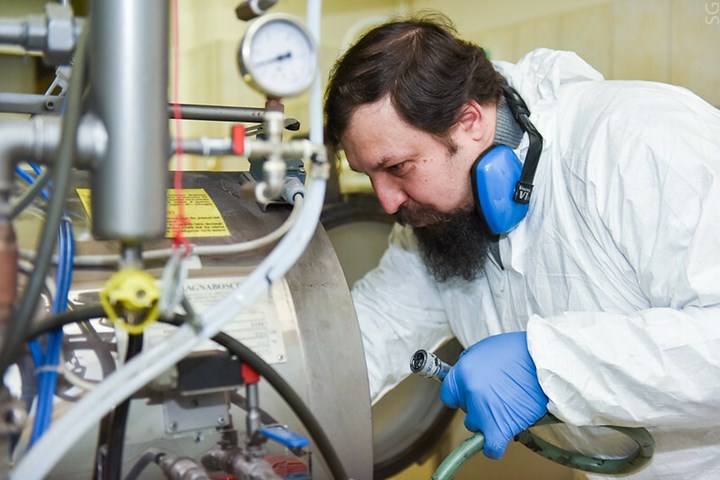Researchers propose new technology to produce composites with adjustable properties
MISIS University and Skoltech scientists develop a method to obtain carbon fiber-reinforced polyethersulfone composite materials for aviation with adjustable properties.

Photo Credit: MISIS University, Skoltech
Scientists at (Moscow, Russia) and the (Skoltech, Russia) have developed a new technology for the production of a new, durable composite material based on carbon fibers in a polyethersulfone matrix. Due to the combination of low density, high strength and chemical stability at elevated temperatures, researchers say it can be used in aggressive environments, such as fuel cells, super-capacitors and next-generation aircraft engine components. The composite can also be easily recycled or disposed of, making it environmentally friendly. The study has been published in .
Polyethersulfone powder, an amorphous thermoplastic polymer, is said to exhibit excellent mechanical properties and is resistant to high temperatures, steam and various chemicals. Unlike epoxy, it is recyclable.
During this research, the surface of the carbon fiber was modified by thermal oxidation, where a thin layer comprising a large number of oxygen-containing functional groups was formed on the surface of the carbon filaments. This was reported to facilitate better adhesion of the fiber to the polymer matrix. Moreover, in order to impregnate the carbon preform — which is traditionally performed via high-pressure impregnation of the polymer melt — researchers dissolved the polyethersulfone powder with an organic solvent at room temperature, after which the modified carbon fiber was impregnated with the resulting solution. Test samples were then dried at 100°C for four hours, and the preform was placed in a mold where the workpieces were being formed under pressure at 350°C for 30 minutes.
Researchers note that final property materials can be adjusted depending on the degree of filling the polymer matrix with fibers.
“Speaking about the possibilities of the material application, we need to look at the specific product in which will be used, since it affects working conditions in the structure, requirements for strength and maximum permissible deformations,” Ph.D. Andrey Stepashkin, senior researcher at the MISIS University Center for Composite Materials and a co-author of the work, explains. “Accordingly, the reinforcement pattern changes, and the degree of filling (fiber content) will also vary. But, if we talk, for example, about materials for aircraft construction, the optimal content of carbon fibers will be more likely in the range of 60-70% of the total weight of the structure.”
Read more about the project in .
Related Content
-
Plant tour: Airbus, Illescas, Spain
Airbus’ Illescas facility, featuring highly automated composites processes for the A350 lower wing cover and one-piece Section 19 fuselage barrels, works toward production ramp-ups and next-generation aircraft.
-
Infinite Composites: Type V tanks for space, hydrogen, automotive and more
After a decade of proving its linerless, weight-saving composite tanks with NASA and more than 30 aerospace companies, this CryoSphere pioneer is scaling for growth in commercial space and sustainable transportation on Earth.
-
Carbon fiber composite pallet revolutionizes freight industry
LOG Point Pallet fuses advanced materials with innovative design and manufacturing to improve supply chains worldwide.






